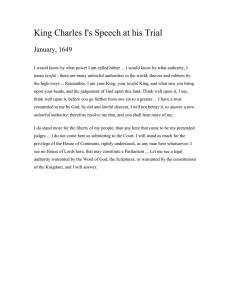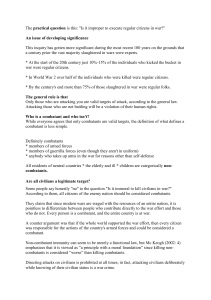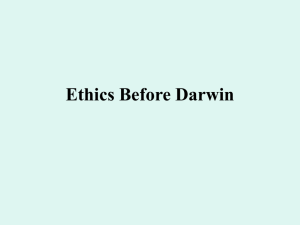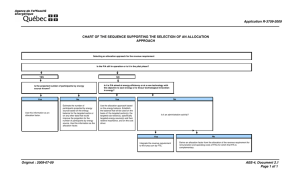Chapter 14 – Targeting Terrorists
advertisement
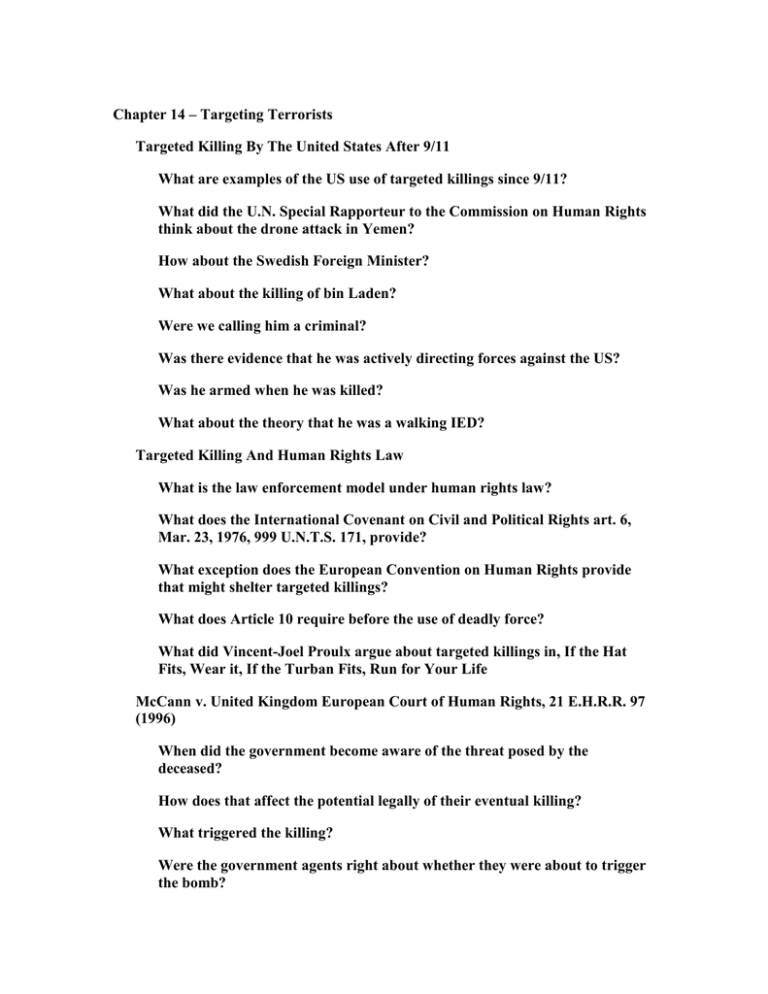
Chapter 14 – Targeting Terrorists Targeted Killing By The United States After 9/11 What are examples of the US use of targeted killings since 9/11? What did the U.N. Special Rapporteur to the Commission on Human Rights think about the drone attack in Yemen? How about the Swedish Foreign Minister? What about the killing of bin Laden? Were we calling him a criminal? Was there evidence that he was actively directing forces against the US? Was he armed when he was killed? What about the theory that he was a walking IED? Targeted Killing And Human Rights Law What is the law enforcement model under human rights law? What does the International Covenant on Civil and Political Rights art. 6, Mar. 23, 1976, 999 U.N.T.S. 171, provide? What exception does the European Convention on Human Rights provide that might shelter targeted killings? What does Article 10 require before the use of deadly force? What did Vincent-Joel Proulx argue about targeted killings in, If the Hat Fits, Wear it, If the Turban Fits, Run for Your Life McCann v. United Kingdom European Court of Human Rights, 21 E.H.R.R. 97 (1996) When did the government become aware of the threat posed by the deceased? How does that affect the potential legally of their eventual killing? What triggered the killing? Were the government agents right about whether they were about to trigger the bomb? Was there a car bomb? What did the European Commission on Human Rights find? Who has appealed this to the European Court of Human Rights? Is the Convention for the Protection of Human Rights and Fundamental Freedoms a strict liability statute, i.e., if the state acts reasonably based on the facts known at the time, but turns out to be wrong, is this a violation? Why weren’t the terrorists grabbed at the border? What implications of not stopping the terrorist at the border was the Court concerned with? How does this undermine the justification for the ultimate killing? Why does the Court question the assumption that they were about the trigger the bomb? What about their bomb expert? Why was there a question about their training? Was the Court able to learn about their training? Did the Court find that the killings were justified under Article 2 of the Convention? Did the dissent agree? What was the risk that the dissent believed justified the killings? If the justification depends on the risk, what happens if think there is a chance of a nuclear attack? Public Committee Against Torture in Israel v. Israel, Supreme Court of Israel, sitting as the High Court of Justice, 46 I.L.M 375 (2006). What is the factual background? Is Israel at war? Is it opposed by a state, i.e., is this an international conflict? What is ‘‘the policy of targeted frustration’’ of terrorism? Are the people they are killing part of the uniformed forces of a state? What is a lawful combatant? Does Israel consider the people it is targeting lawful combatants? Can you kill lawful combatants? What are the advantages of being a lawful, as opposed to unlawful, combatant? What is a civilian? Can you kill civilians? Does IHL recognize the category of unlawful combatant? Is that a satisfactory result in this case? What is the Court’s three part test for when citizens are no longer protected under IHL? How do you apply each part? What is a hostile action? What are some examples of direct versus indirect hostilities? What if you are hostile one day, but not the next? What did the U.N. Special Rapporteur tell us about the duration of participation? (401) What three part test must each action meet? What about the problem of unlawful combatants who go back to safe havens where they do not engage in hostilities between attacks? What about some who sees himself as defending his home against the occupying force? Why did Schmitt argue that it was good define direct hostilities very broadly? What is proportionality ‘‘stricto senso,’’? What is the proportionality test for injuring innocent civilians? Is there a proportionality test for combatants, both lawful and unlawful? Does the Court find that when the cannon roar, the law is silent? Did it find that all targeted killings are legal or illegal? How much the cases be resolved? In practical terms, is this likely to restrain the attacks? Harold Koh, The Obama Administration and International Law What does Professor Koh identify as the two key principles of law of war? How does he meet this three objections? First, some have suggested that the very act of targeting a particular leader of an enemy force in an armed conflict must violate the laws of war. Second, some have challenged the very use of advanced weapons systems, such as unmanned aerial vehicles, for lethal operations. Third, some have argued that the use of lethal force against specific individuals fails to provide adequate process and thus constitutes unlawful extrajudicial killing. Executive Order No. 12,333 What does Executive Order No. 12,333 ban? What is the traditional definition of an assassination? Why is it a problem as public policy? Is it defined in war time against combatants? When can you kill civilians as well? What are examples of the US targeting civilian populations directly, rather than as collateral damage to military attacks? Is there a provision of the United Nations Charter that might shelter assassinations? How does W. Hays Parks, in this Memorandum of Law: Executive Order 12333 and Assassination, distinguish various targeted killings from assassinations? Does this leave much that banded? Would Executive Order 12,333 ban killing al Qaeda members? Why or why not? Who about their bankers? When should we use assignation? How do you get around Executive Order 12,333? Can this be done secretly?
